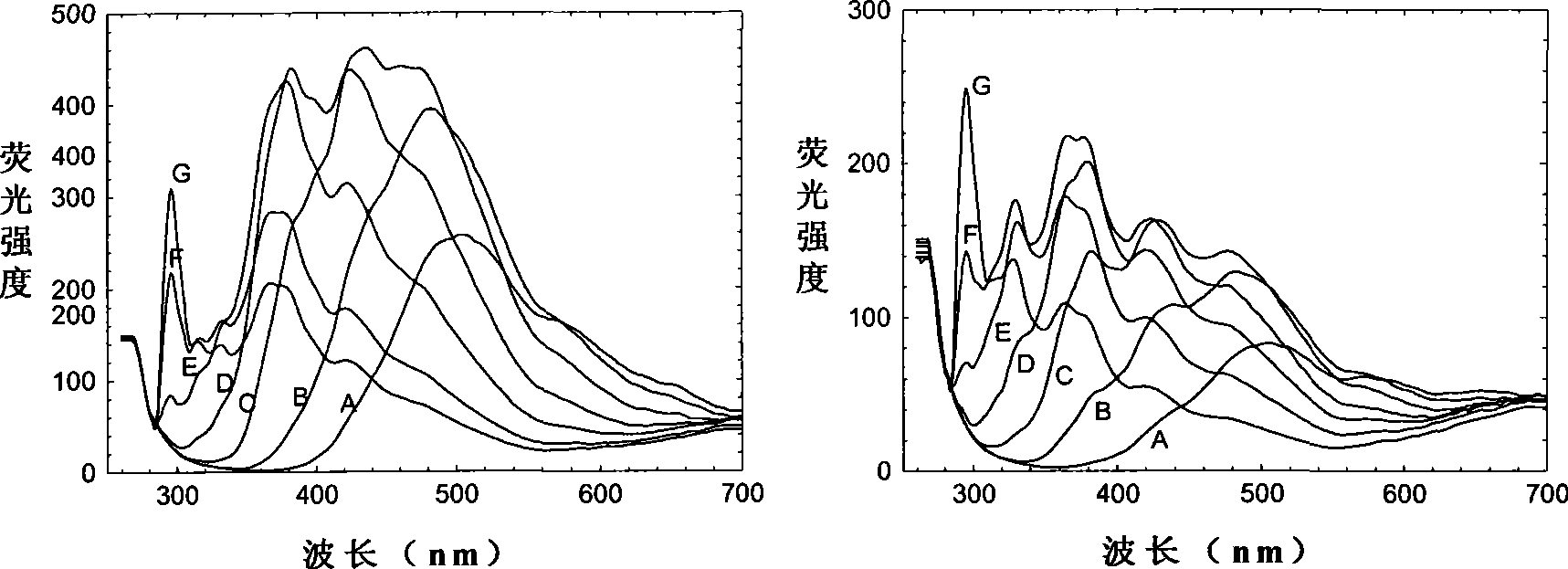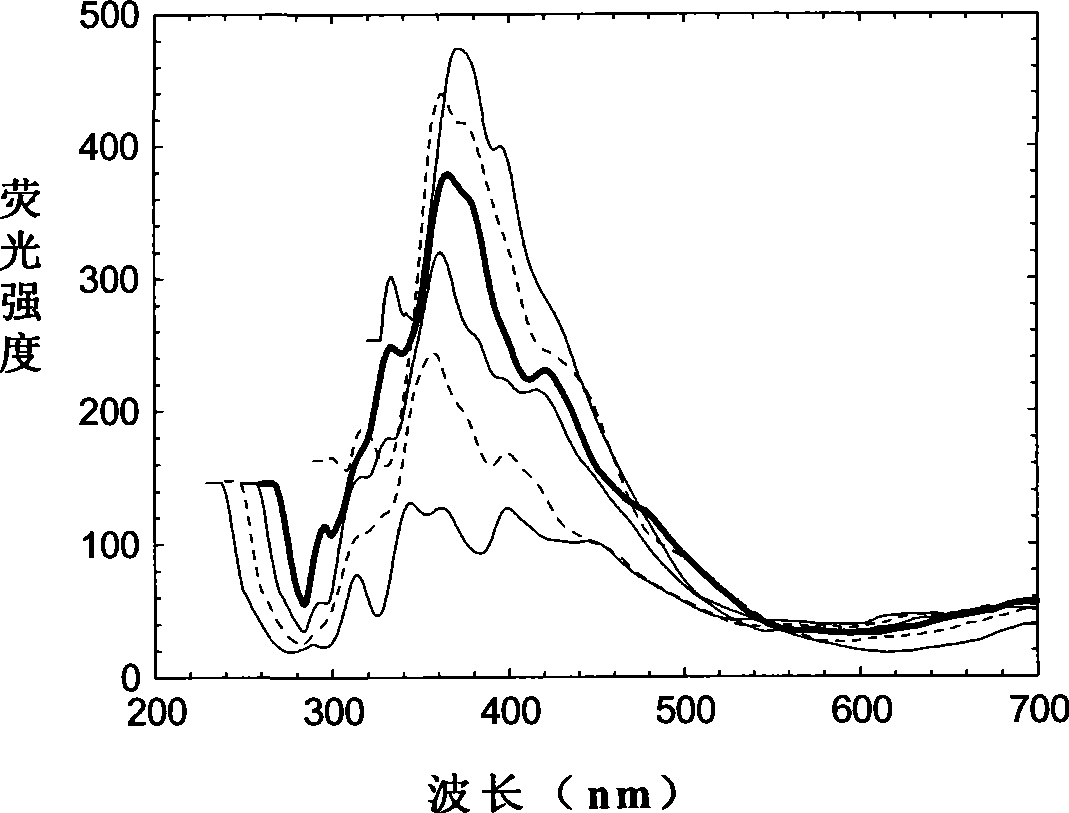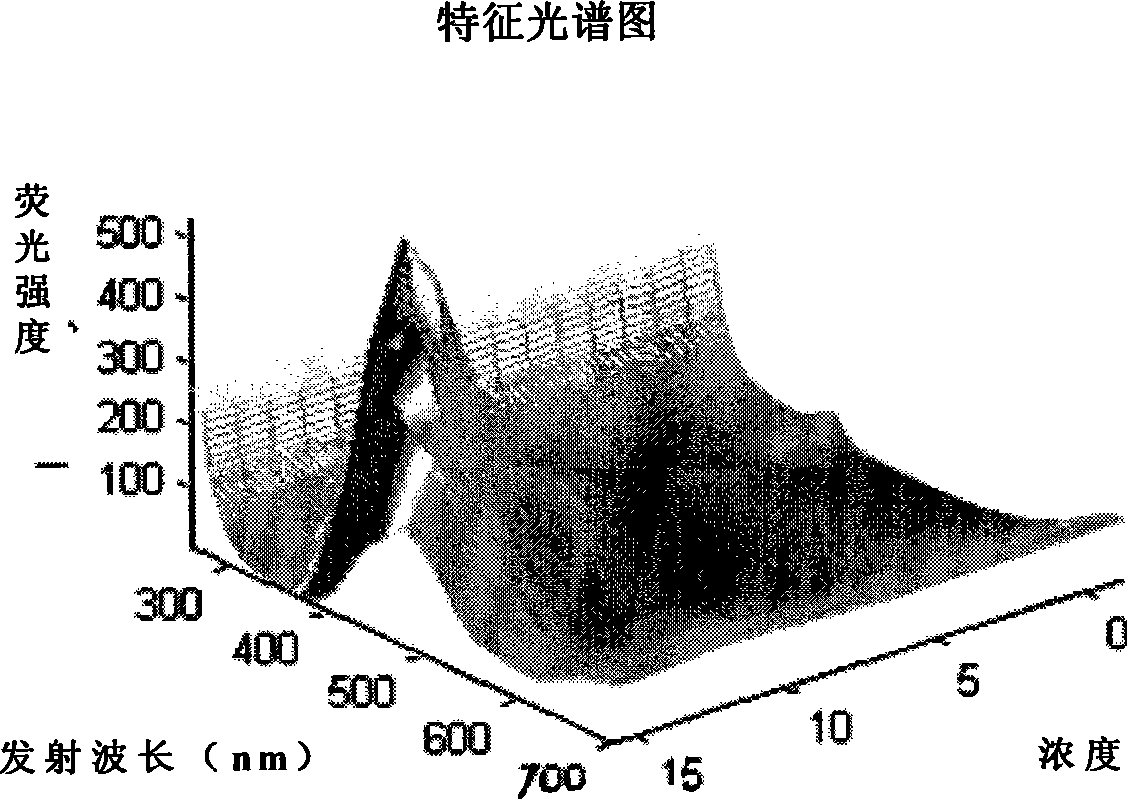Oil species identification method by sea oil spill concentration auxiliary auxiliary parameter fluorescence spectrum
A technique of fluorescence spectroscopy and auxiliary parameters, which is applied in the field of oil species identification of marine oil spills, can solve problems such as difficulties in laboratory application, inability to further analyze quantitative values of polluted areas, and expensive analytical instruments
- Summary
- Abstract
- Description
- Claims
- Application Information
AI Technical Summary
Problems solved by technology
Method used
Image
Examples
Embodiment 1
[0021] 1. Configuration of oil spill sample series concentration extraction solution
[0022] For a certain oil spill sample, it is necessary to prepare the corresponding concentration from 10g / L to 1.0×10 -4 g / L of 18 groups of sample extracts. The specific preparation method of the extract is: use an electronic balance to weigh 0.10 g of each of the above crude oil samples, and prepare in a measuring cup into a stock solution with a corresponding concentration of 10.0 g / L, which is also the first group of samples to be tested. After the first group of samples is prepared, the glass stopper should be tightly closed to prevent the volatilization of the extractant. It can be placed in a warm water bath to speed up the dissolution, and each colorimetric tube can be shaken to promote the full dissolution of the crude oil sample in the extractant. After the crude oil sample was fully dissolved, extracts from groups 2 to 18 were prepared by diluting the concentration in half. The ...
Embodiment 2
[0030] 1. Configuration of oil spill sample series concentration extraction solution
[0031] For a certain oil spill sample, it is necessary to prepare the corresponding concentration from 10g / L to 1.0×10 -4 g / L of 18 groups of sample extracts. The specific preparation method of the extract is: use an electronic balance to weigh 0.10 g of each of the above crude oil samples, and prepare in a measuring cup into a stock solution with a corresponding concentration of 10.0 g / L, which is also the first group of samples to be tested. After the first group of samples is prepared, the glass stopper should be tightly closed to prevent the volatilization of the extractant. It can be placed in a warm water bath to speed up the dissolution, and each colorimetric tube can be shaken to promote the full dissolution of the crude oil sample in the extractant. After the crude oil sample was fully dissolved, extracts from groups 2 to 18 were prepared by diluting the concentration in half. The ...
Embodiment 3
[0039] 1. Configuration of oil spill sample series concentration extraction solution
[0040] For the range of series concentrations of oil spill samples, under normal conditions, 10g / L to 1.0×10 -4 g / L. Considering the requirements for the amount of data information, the concentration range can also be appropriately reduced or increased, but it should not be limited to high or low concentrations, and should have a span of at least two orders of magnitude. For commonly used fluorescence spectrophotometers, the maximum can be extended from 20g / L to 1.0×10 -6 g / L, if laser-induced fluorescence spectroscopy is used, the concentration range can be reduced to 1.0×10 -9 g / L.
[0041] Weigh a conventional oil spill sample for simultaneous spectrum measurement under a series of concentrations. For a certain oil spill sample, it is necessary to prepare the corresponding concentration from 20g / L to 1.0×10 -6 Each n group of sample extracts in g / L, the number of n and the concentrati...
PUM
 Login to View More
Login to View More Abstract
Description
Claims
Application Information
 Login to View More
Login to View More - R&D
- Intellectual Property
- Life Sciences
- Materials
- Tech Scout
- Unparalleled Data Quality
- Higher Quality Content
- 60% Fewer Hallucinations
Browse by: Latest US Patents, China's latest patents, Technical Efficacy Thesaurus, Application Domain, Technology Topic, Popular Technical Reports.
© 2025 PatSnap. All rights reserved.Legal|Privacy policy|Modern Slavery Act Transparency Statement|Sitemap|About US| Contact US: help@patsnap.com



